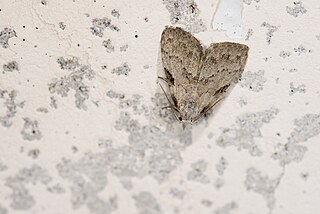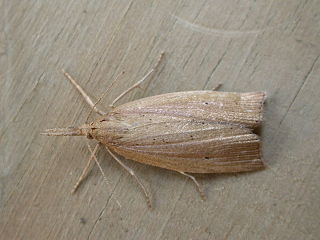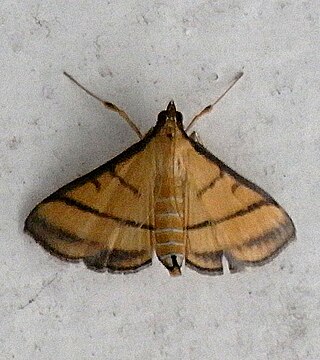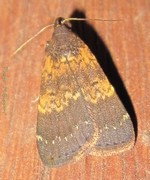
Nola is a genus of moths described by William Elford Leach in 1815. They are the namesake of the subfamily Nolinae and the family Nolidae. This genus occurs worldwide wherever suitable habitat is present.

Amata is a genus of tiger moths in the family Erebidae. The genus was erected by Johan Christian Fabricius in 1807.

Cyana is a genus of moths in the family Erebidae. Species are well distributed in Africa, Madagascar, China, India, Sri Lanka, Myanmar, Sumatra, Java and Borneo. The genus was erected by Francis Walker in 1854.

Eressa is a genus of moths in the family Erebidae. The genus was erected by Francis Walker in 1854.
Hemonia is a genus of moths in the family Erebidae first described by Francis Walker in 1863. They are found only in Sri Lanka and Borneo.

Miltochrista is a genus of moths of the family Erebidae, subfamily Arctiinae. The genus was erected by Jacob Hübner in 1819.
Nishada is a genus of moths in the family Erebidae. They are found in India, Sri Lanka, Myanmar, Sumatra, and Borneo.
Padenia is a genus of moths in the subfamily Arctiinae described by Frederic Moore in 1882.
Utriculofera is a genus of moths in the subfamily Arctiinae erected by George Hampson in 1893.
Schistophleps is a genus of moths in the family Erebidae first described by George Hampson in 1891.

Manoba is a genus of moths in the family Nolidae. The genus was first described by Francis Walker in 1863.

Teulisna is a genus of moths in the family Erebidae. The genus was erected by Francis Walker in 1862. They are found in Sri Lanka, India, Myanmar, Borneo and Java.

Chilo is a genus of moths of the family Crambidae. Some of these moths are called borers.

Cnaphalocrocis is a genus of moths of the family Crambidae. The genus was described by Julius Lederer in 1863.

Culladia is a grass moth genus of subfamily Crambinae, tribe Crambini. Some authors have assigned the synonymous taxon Nirmaladia to the snout moth family (Pyralidae), where all grass moths were once also included, but this seems to be in error.

Adrapsa is a genus of moths of the family Erebidae. It was erected by Francis Walker in 1859.

Hydrillodes is a genus of litter moths of the family Erebidae first described by Achille Guenée in 1854. Its validity is somewhat disputed.

Euproctis is a genus of tussock moths in the family Erebidae described by Jacob Hübner in 1819. Species are cosmopolitan, widespread throughout Palearctic, African, Oriental and Australian regions. Molecular phylogenetic studies indicate that the genus as presently understood comprises a large number of unrelated lineages, only a few of which have names, and is therefore in serious need of revision.

Derambila is a genus of moths in the family Geometridae first described by Francis Walker in 1863.













